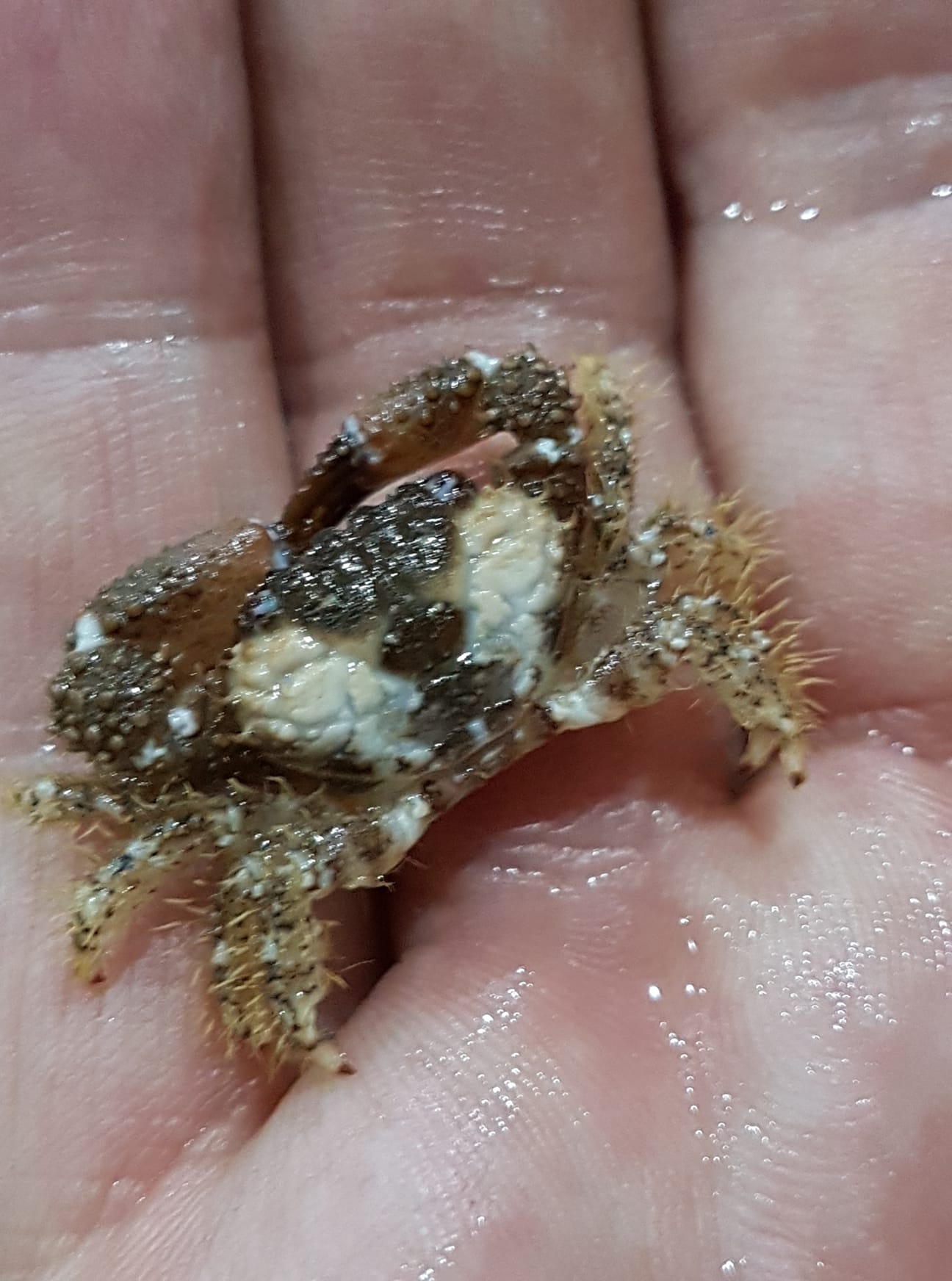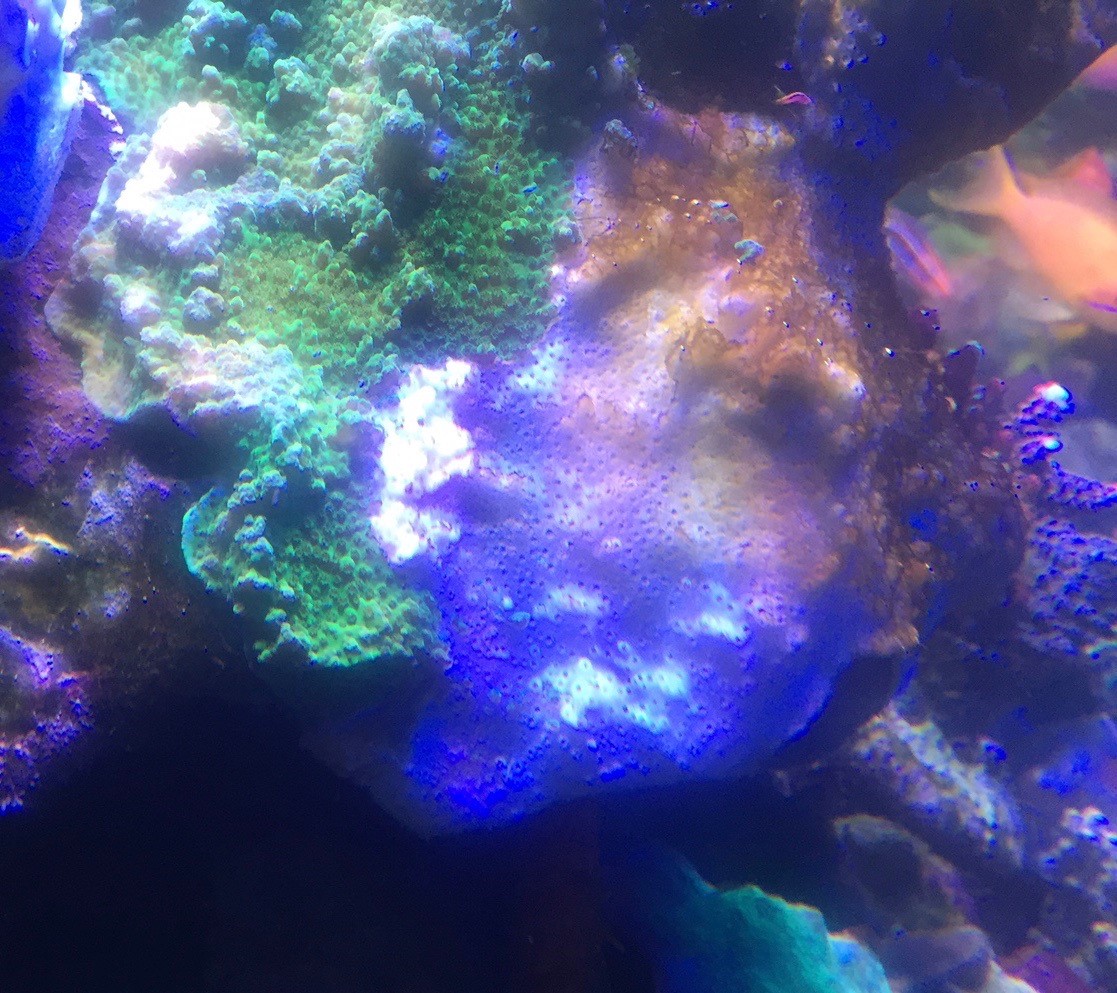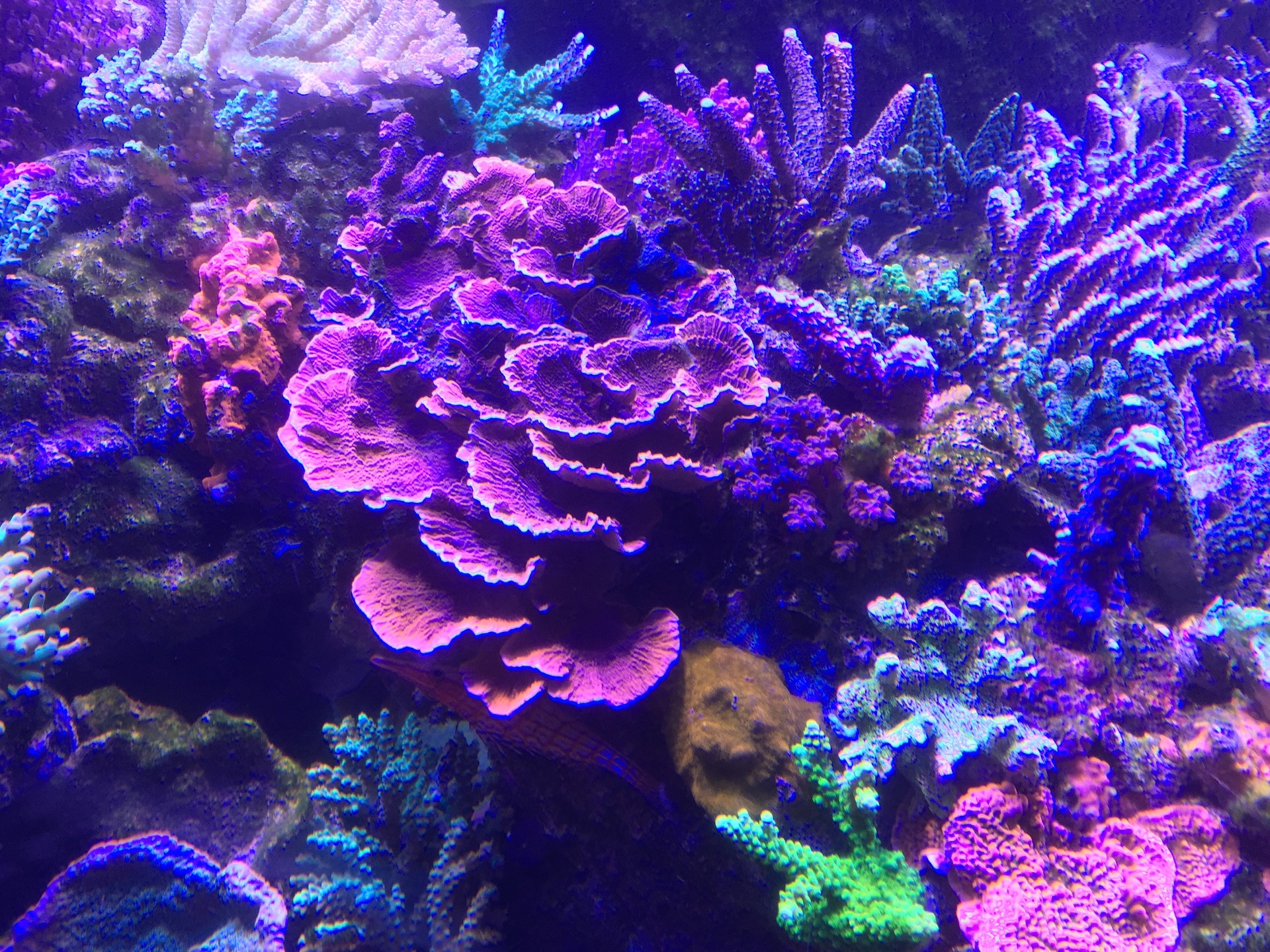After getting corals via the internet or from a local shop they need to be treated for parasites, infections, and other maladies that we do not want to introduce into a tank. I know that shops and online stores will guarantee that their corals are pest-free, but I would not take frags from my mother without dipping them and even better dipping and placing them in quarantine.
Despite our best intentions, something bad can be introduced any time we add something new to our tanks. And unfortunately, once these coral pests are introduced into a tank it is difficult to impossible to remove them. Just like fish, corals need to be cleaned, dipped and if possible quarantined. While I have quarantine tanks for all of my new fish and corals, I realize that most of us, for whatever reason, do not. So I will assume that most new corals will not be going into quarantine, so they will need to be aggressively managed instead.
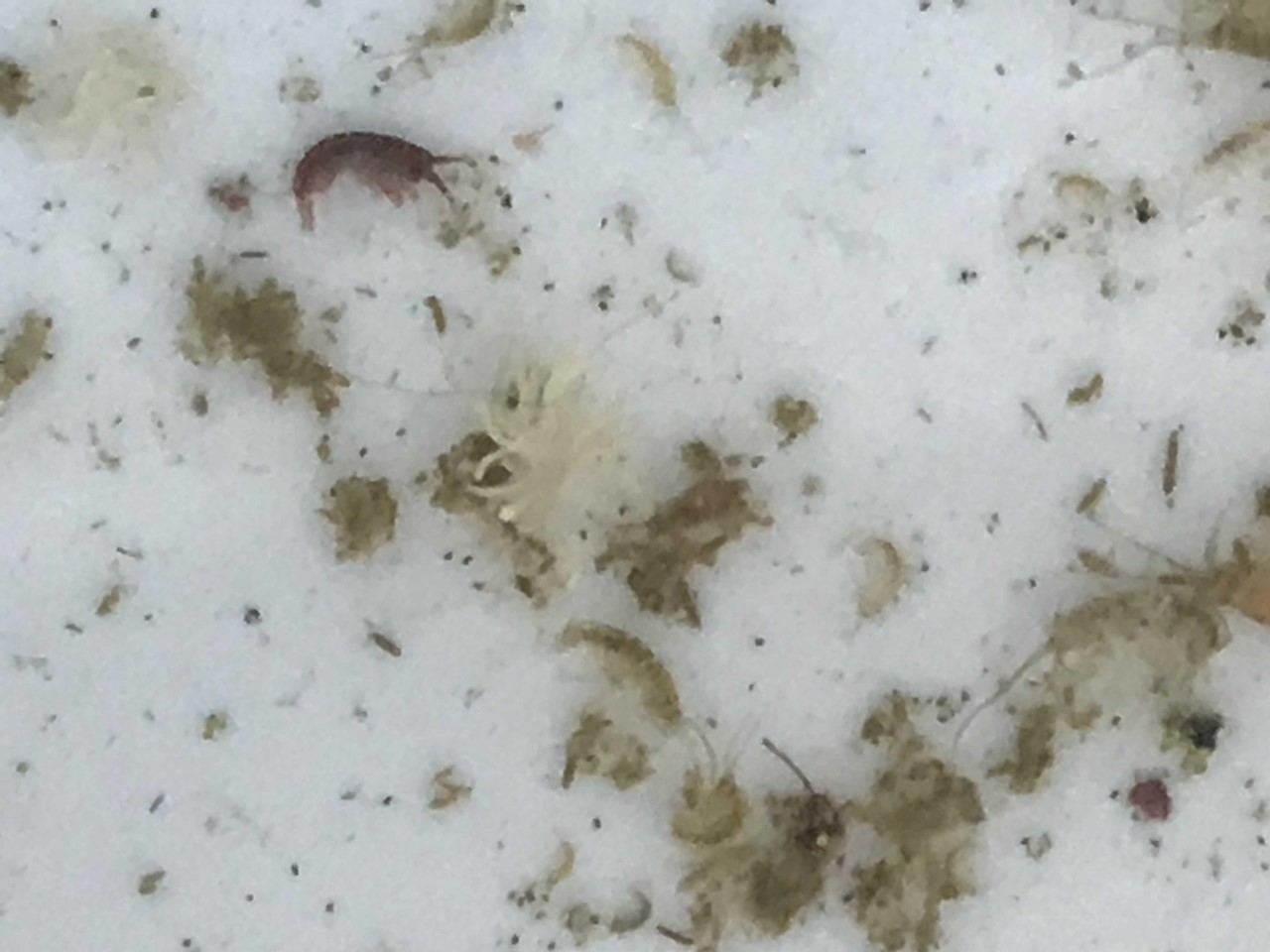
Russian Roulette is not a game for sissies, but that is what we are playing every time we add a new coral, rock, or invertebrate to our tanks. My first rule is that if I do not know what something is, I remove it. The second rule is, that if I cannot see inside it, I remove it or treat it. And the third is everything gets treated, NO EXCEPTIONS. All it takes is for one pest or bad bacterium to get into a tank and then it needs to be determined what it is, then how to treat it, and then finally how to put this into practice without killing the good inhabitants. So every coral, whether it’s a wild colony, maricultured colony, or coral frag from my best friend’s tank, regardless of size, it gets treated.
The process for doing this is rather straightforward and has now been in use for over five years. It is gentle on the corals but kills the majority of pests and there has not been a loss of coral during the process. First, the corals are acclimated to the tank’s water that they are going to be added to for a couple of hours via tank water being slowly dripped into their holding container. If the water they are going into has a significantly higher alkalinity than their water, this acclimation should take four hours or longer if possible. I have found that adding frags to water that is significantly higher (<1.5) in alkalinity stresses them and can lead to STN/RTN.
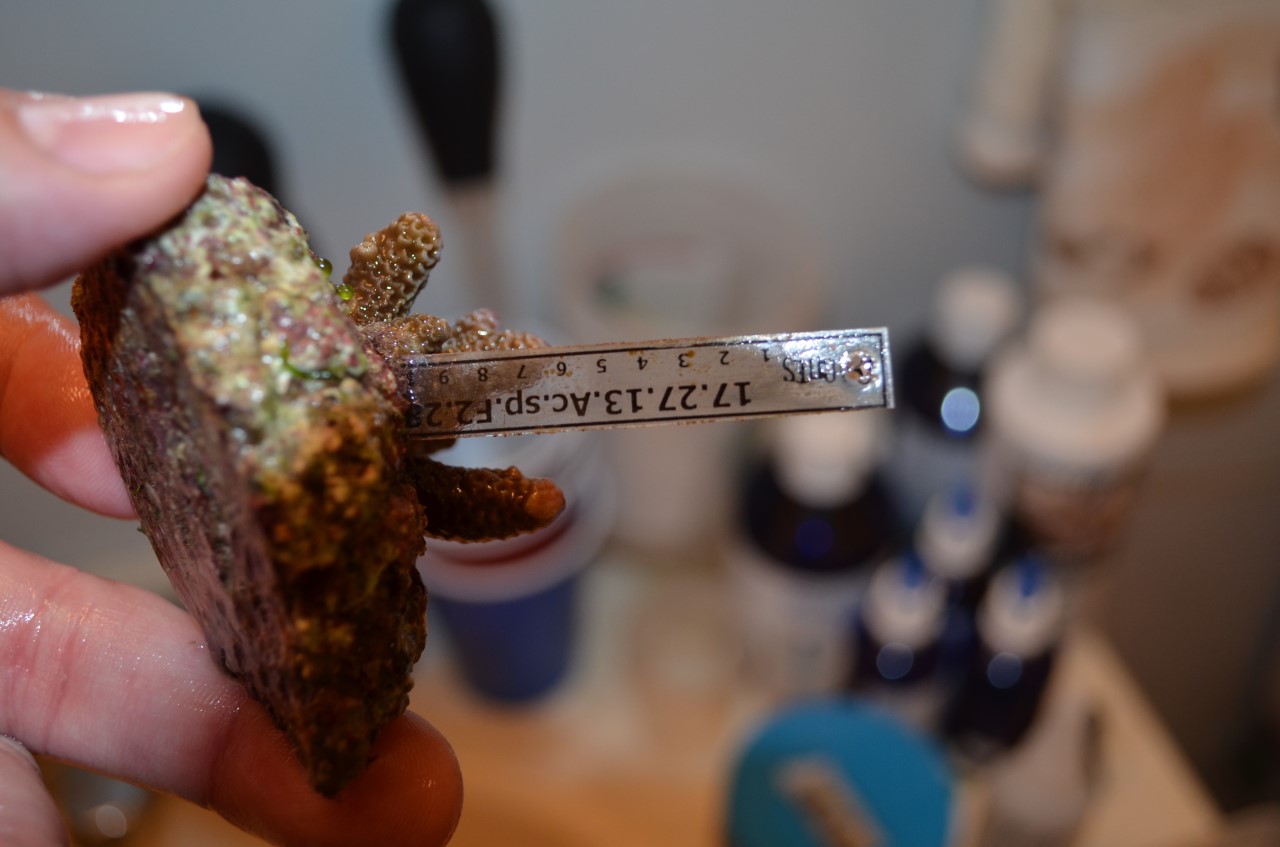
Next frags are detached from their plugs, maricultured pieces from their cement plugs, and small colonies from any live rock or other material that they are attached to. This may seem drastic to cut them off even if they have encrusted, but to me making sure there is no chance of introducing something in the rock or substrate is worth it. It should be noted that the other reason I remove the substrate is because the substrate near the coral is often where pests lay their eggs, and unfortunately most of these eggs are impervious to just about any type of treatment or dip.
The corals are then placed in a dip that is a variation of the Kung Fu dip. The corals are first rinsed with a dilute hydrogen peroxide dip (1:5 peroxide to tank water), before being placed in the main dip. The main dip consists of 250mg Cipro, 10 drops Lugol’s iodine, 3 scoops Chemiclean, 20ml CoralRx, 1 cap Coral Restor, and 1 Tbsp Potassium Chloride (KCl). These should all be mixed with one gallon of tank water per dose. The corals are allowed to rest in this for approximately 45 minutes. After this dip, they are washed again in the dilute hydrogen peroxide solution. The soaking solution should be maintained at the same temperature as the tank into which they will be introduced.
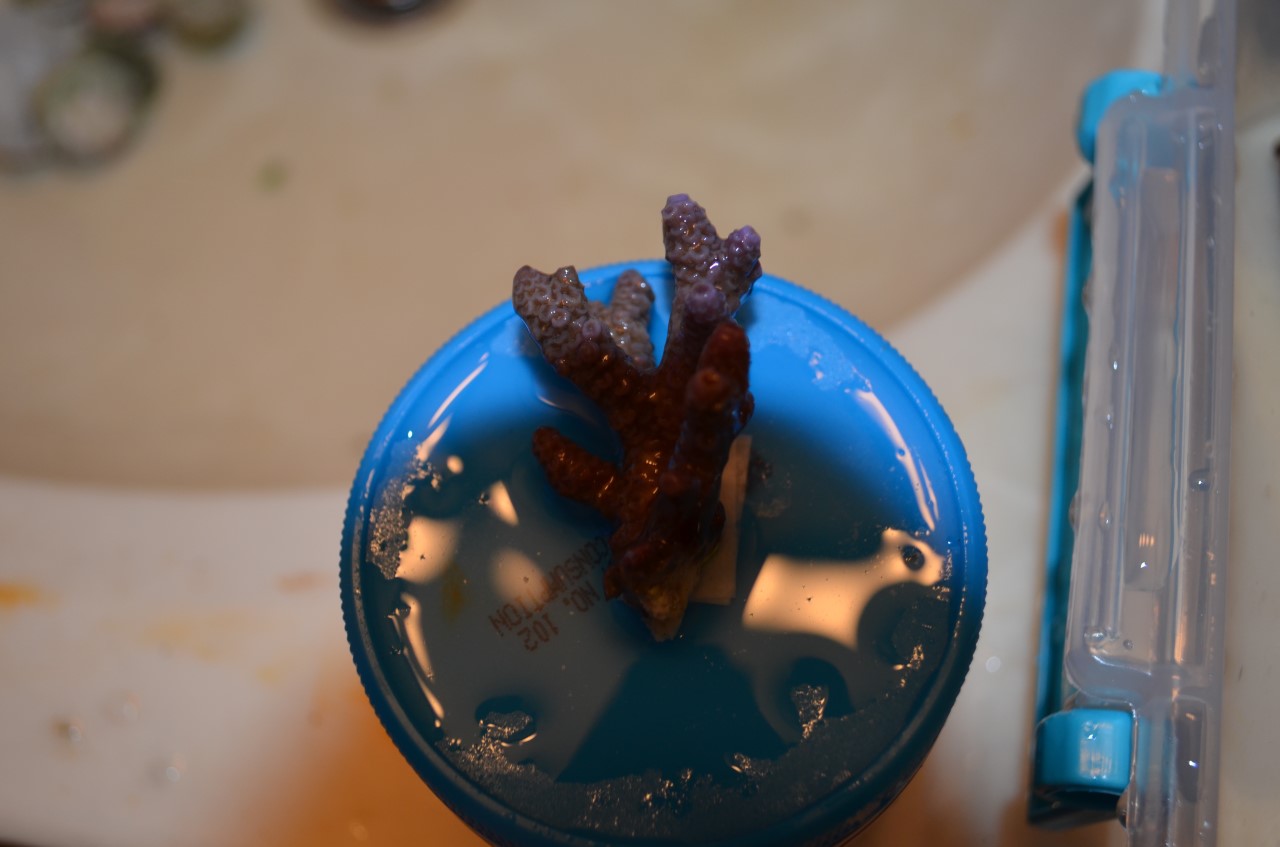
Containers specifically for dipping corals should be set aside and only used for this purpose. And while none of the compounds in the dip are caustic or harmful, gloves and protective eyewear should be used as a precaution. The dipping containers should be clear glass or plastic and these should be set on white towels. The white towel makes it possible to see what comes off of the corals. Most of the pests we are looking for are light-colored or beige or gray, so against the bright white towel, they stand out.
Once the coral is in the final rinse bowl, one other test should be done to make sure the corals are pest-free. With all of the lights out, a blacklight LED flashlight is shined on the corals and other invertebrates. By doing so, most corals will glow uniformly showing their health, however, if there are eggs or dead tissue or something else on the coral this usually shows up as a colorless spot. So by shining this light pest eggs and other issues can be readily seen and managed.
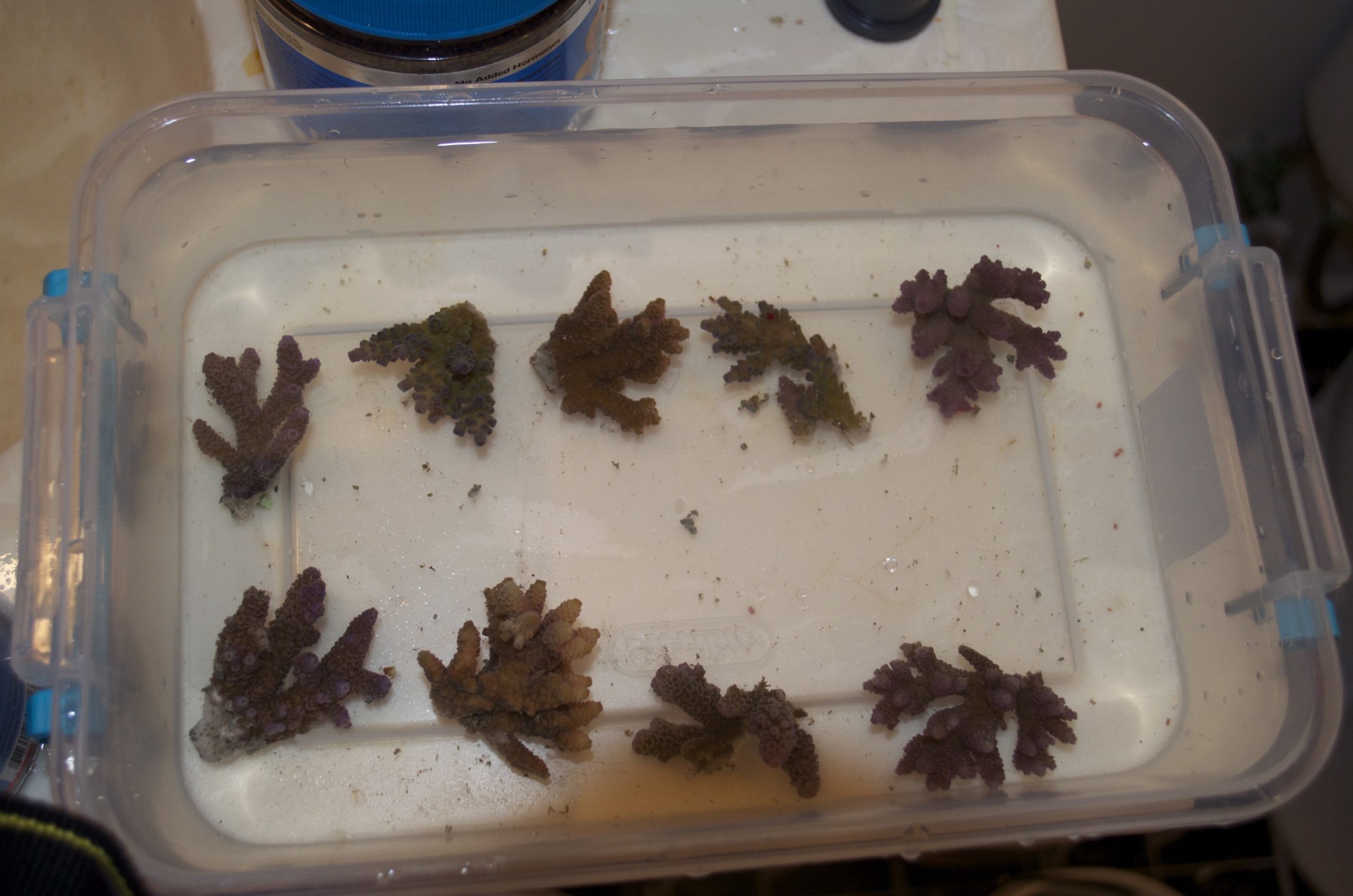
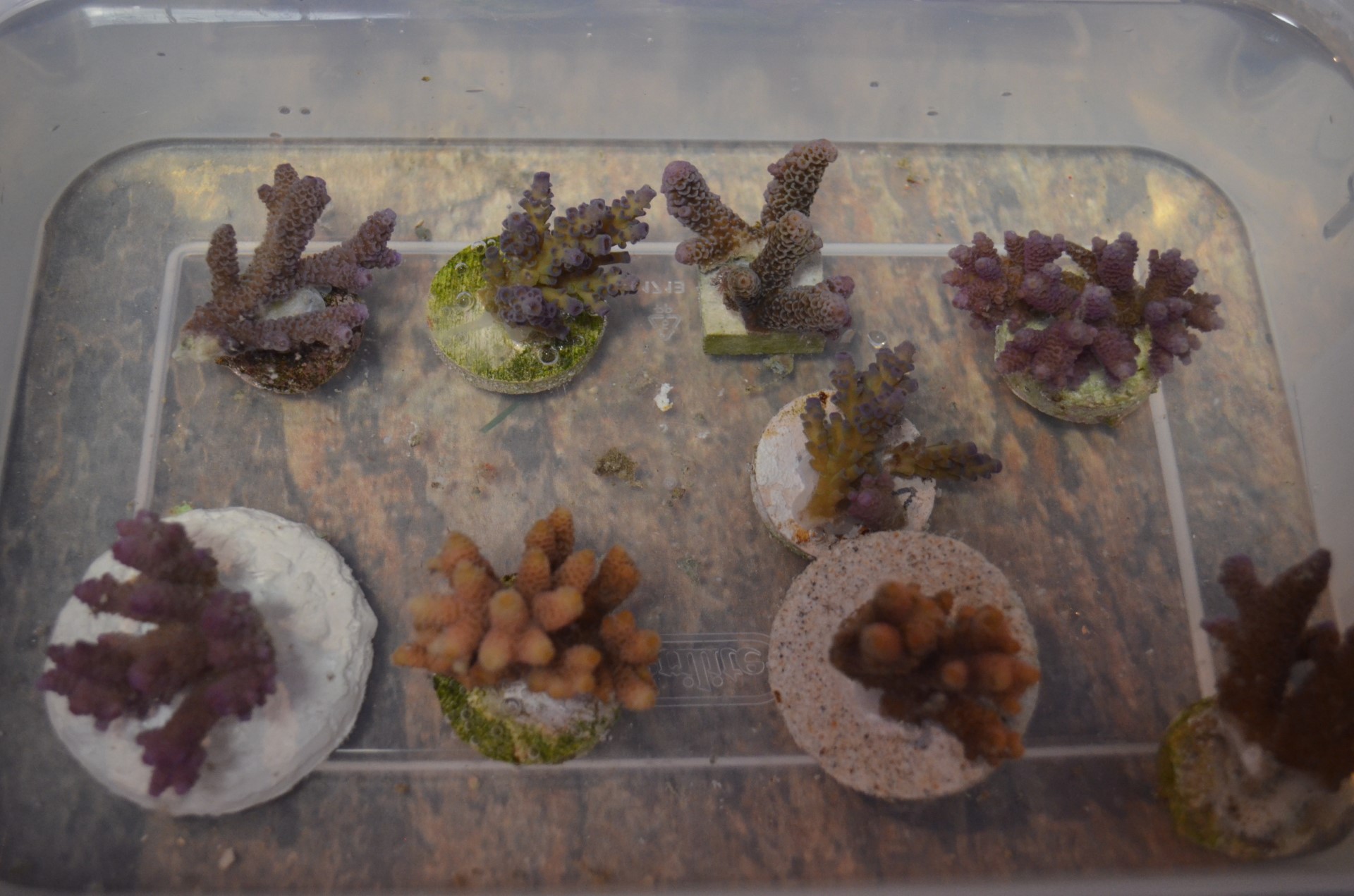
After this dipping process, the coral is placed in either a quarantine tank or in a quarantine chamber in the tank it will be kept for a week. This is done to make sure that no pests have been missed, especially those that burrow into the soft coral tissue or under the outer tissue of an sps coral. By doing this, it is possible to see if any areas of the corals show signs of distress or damage which can indicate that a pest may be present. These corals are allowed to rest in these chambers for 4-5 days and up to a week, again to make sure that nothing is missed. During this quarantine process the chamber should be kept low in the tank to reduce the chances of light stress damaging the corals. Very rarely are corals damaged by too little light, but too much can easily harm them.
Once all of this has been done the coral is mounted on a new clean plug, old used plugs can be placed in a microwave oven after they have been used, to kill off any pests that may be present in them. Then the corals are mounted and placed in their desired spot in a tank or allowed to grow in a frag tank. I use a gel-type acrylate glue to mount coral frags, but any adhesive like marine epoxy, etc. can be used for mounting.
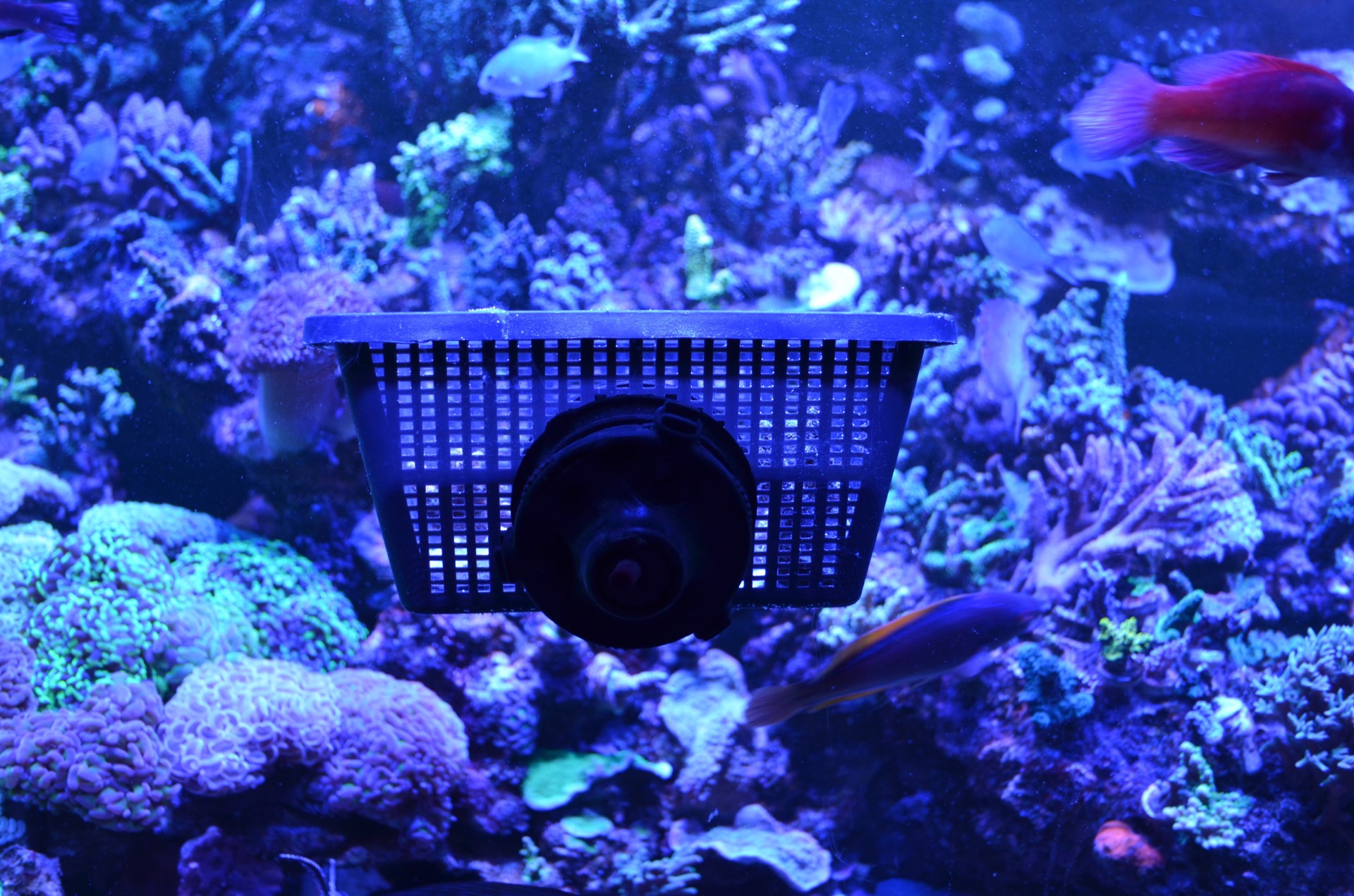
It is interesting that unlike when they first were imported, maricultured pieces when removed from their plugs are now not much bigger than frags used to be, so they are treated the same as large frags. I have noticed little stress on the corals that go through this process as long as they are not exposed to air for any extended length of time, which can stress some corals but have not lost any as a result of this treatment.
This may seem like a lot of work just to reduce the likelihood of introducing a pest, but if you ever have to battle Acropora eating flatworms or Montipora eating nudibranchs you will be grateful that you did this. As the old cliché goes an ounce of prevention is worth a pound of cure. The value of preventing pests from entering a reef tank is even greater than this in my estimation. I know of numerous hobbyists who left the hobby after they inadvertently introduced a pest by not dipping or quarantining new specimens. As with most aspects of this hobby, rushing to do something, like adding new frags without dipping only leads to problems. Preventing pests from ever entering a system goes a long way in achieving long-term success.
